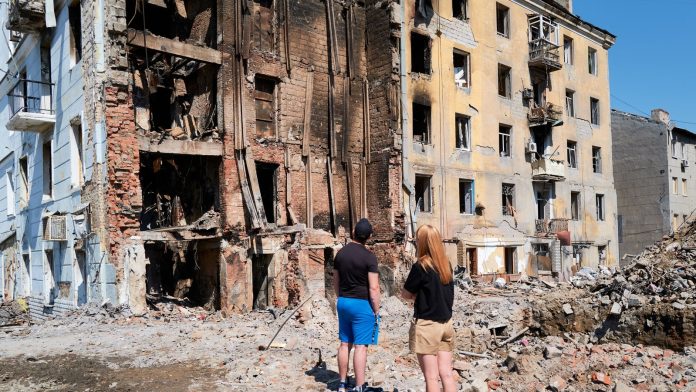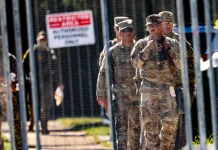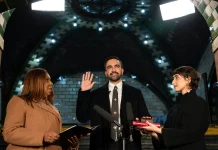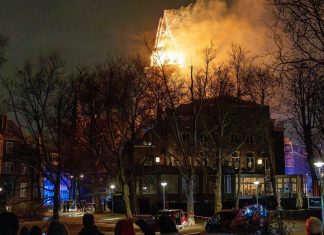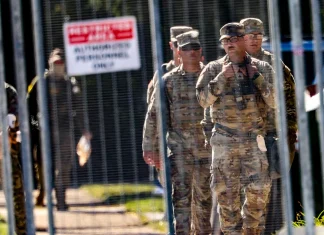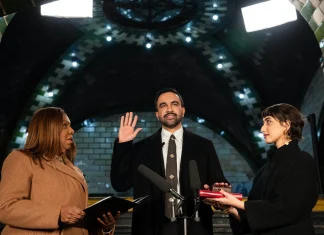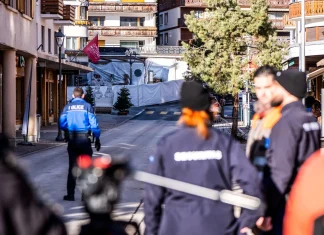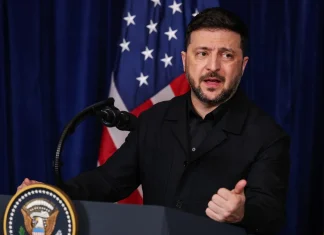War’s Unyielding Echo: Life and Loss Amid Ukraine’s Latest Strikes
In the stillness of early morning, when the world strives for calm, the sounds of war have refused to quiet in Ukraine’s eastern landscapes. Moscow’s relentless shelling and drone raids have exacted a grim toll—six lives lost, dozens more wounded. Yet, in an unsettling paradox, Kyiv launched its own counterstrikes deep within Russia, targeting critical oil refineries. In this relentless dance of destruction, the human spirit—caught between the devastation outside and the fragile hope within—comes alive in stories too potent to stay buried beneath headlines.
The Pulse of the Frontline: War Continues Unabated
On the frontlines, where the earth itself seems to weep from decades of conflict, the violence rages without pause. Despite hopeful murmurs from Washington and Moscow about an imminent summit—set to take place in Alaska between Presidents Vladimir Putin and Donald Trump—a ceasefire remains elusive. Notably absent from these high-level talks is Ukraine’s own voice, a stark reminder of how diplomacy often sidelines those most affected.
“There has been not a single real step towards peace,” President Volodymyr Zelensky lamented during his evening address, speaking not just as a leader, but as a man weighed down by the human cost of this war. “No gestures, no actions in air or on land that might spare even one life.” His words reverberated across the country, echoing through shattered homes and shattered dreams.
Eastern Ukraine—a Land Under Siege
The east—particularly the beleaguered regions of Donetsk, Zaporizhzhia, and Kherson—bears the brunt of the attacks. It was here, across these contested lands, that six people lost their lives. Zaporizhzhia, a city that not long ago hosted documentary filmmakers and families enjoying a rare moment of peace, came under tragic assault. A Russian glide bomb struck a crowded bus station during the day, injuring 19, many critically. Rescuers, accompanied by sniffer dogs, sifted through the rubble, pulling survivors and directing rescue operations in real-time scenes of emergency and urgency.
The images paint a stark picture: the bus station, once a hub of daily routine, now reduced to shattered glass and twisted metal, dust swirling in rays of weak sunlight. “You see the blood stains on the ground, the fear in the eyes of people—this is our reality now,” said Dmytro Ivanov, a volunteer paramedic who arrived late that afternoon. “Every explosion, every drone strike reminds us that no one is safe, even in the busiest places.”
Casualties in Unexpected Places: The Black Sea Tragedy
Away from the urban centers, tragedy struck along the sun-kissed Black Sea coast. Three beachgoers, blissfully unaware of the lurking dangers beneath the waves, lost their lives to mines—remnants of a war that refuses to stay contained. Swimming in a prohibited area, they uncovered a deadly secret, a lethal vestige of conflict beneath the tranquil surface.
Anna Kovaleva, a local innkeeper in Odesa, spoke softly about the incident. “Summer is when we see families come to enjoy what little peace we have. To lose people like this… it’s a terrible shock—a reminder that the war’s shadow is longer and darker than we imagine.”
Kyiv Strikes Back: A Strategic Targeting of Russia’s Oil Lifeline
But this modern battlefield extends beyond artillery and infantry. The war now targets the economic arteries sustaining it. Ukraine’s military drones reached deep inside Russian territory, delivering blows to two oil refineries far from the noisy front lines—one in Saratov, another in the Komi Republic’s remote expanses more than 2,000 kilometers from the border.
Provincial officials from Saratov acknowledged the damage only vaguely. Governor Roman Busargin admitted that “one of our industrial enterprises” was hit, with the grim confirmation of a fatality. In Komi, despite the governor’s quieter assurances of no casualties, Ukrainian intelligence sources painted a clearer picture—significant damage inflicted on the Ukhta refinery, a critical node in Russia’s oil production network.
“These strikes are about more than immediate damage,” explained Dr. Ekaterina Fedorova, an energy analyst based in Moscow. “They are strategic moves by Ukraine to cut off the financial veins feeding Russia’s war machine. Oil and gas revenues constitute a significant portion—roughly 40%—of the Russian state budget, so disrupting these sources could have long-term political and economic consequences.”
Closer to Home, Closer to Pain
In Russia’s Belgorod region, frequently caught in crossfire due to its proximity to Ukraine, another woman succumbed to the ongoing violence. Local governor Vyacheslav Gladkov announced her death with sorrow, underscoring the spillover effect and the human cost beyond Ukraine’s borders. Civilians—on all sides—become unexpected victims in an irresolvable tragedy.
Shifting Frontlines: The Battle for Bezsalivka
Meanwhile, in the Sumy region, Ukrainian forces reported reclaiming the village of Bezsalivka from Russian control, signaling not just a tactical victory, but a beacon of resistance. The fighting here is emblematic of a broader trend: despite recent Russian gains, Ukrainian troops refuse to relinquish ground easily.
Oleksandr Petrenko, a local farmer whose home lies just beyond Bezsalivka, shared his mixed feelings. “Every time the lines shift, families cling to hope. We rebuild, we resist. War takes so much, but it can never take away the human will to live and protect what’s ours.”
The Summit Unfolds Without Ukraine: What Does It Mean for Peace?
Against this backdrop of conflict and courage, the planned meeting between Putin and Trump in Alaska looms large. Both leaders arrive with high stakes, but the notable absence of Ukraine from the dialogue begs a critical question—can meaningful peace be brokered without the voices of those under siege?
European leaders and Kyiv alike have voiced concern and frustration over being sidelined. “Peace talks that exclude the very nation suffering the war rings hollow,” said Maria Hryshchenko, a Brussels-based policy advisor. “True diplomacy must be inclusive to be effective.”
As readers across the world, we are asked to reflect on the paradoxes of modern conflict, the human stories beneath geopolitical maneuvers, and the enduring quest for peace despite the cacophony of war. What does it take for international powers to listen? For communities fractured by shelling to heal? For common humanity to prevail where bullets and drones have dominated?
Concluding Thoughts: Beyond the Headlines
The unfolding events in Ukraine’s eastern theaters are not isolated. They are part of a global narrative—one of resilience, strategic gambits, and the fragile pursuit of peace amid relentless turmoil. As cities like Zaporizhzhia nurse fresh wounds and families mourn the lost, the world watches with a mixture of hope and dread.
In this dire landscape, stories of courage—whether from volunteers pulling survivors from rubble, villagers reclaiming their homes, or leaders insisting on speaking truth to power—remind us that amidst the darkest hours, the human spirit endures. And in that endurance lies the faint but unbreakable promise of a future where peace might one day bloom.


